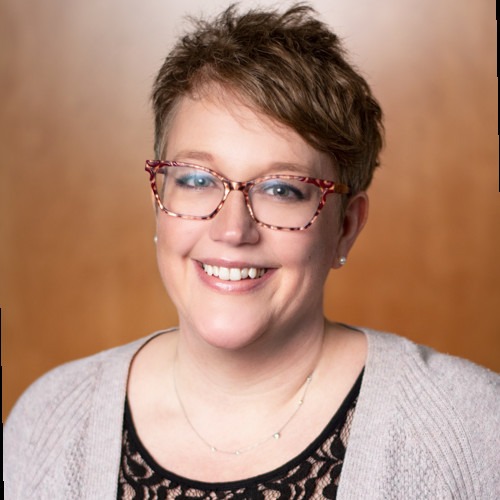Online marketing for assisted living
Seniors are searching. The Brookings Institution reports 55 percent of seniors are using the Web to get health or medical information. So what does your website say about your assisted living (AL) community and what it offers to prospective residents and their families?
“When you’re considering making an investment in your AL website, a prospective resident needs to get a taste of what living there will be all about,” says Luke Fannon, CEO of Premier Coaching & Training, Unionville, Pa. “You have services that your community provides, so provide a concise, clear description of what those services are and how they will support an elderly person as they’re aging.”
Harnessing the power of the Internet to market your AL can be as easy or as complicated as a community can afford to make it. Websites can feature horizontal scrolls or slideshows of residents enjoying an activity or the photos can be static as a user scrolls down the screen. Video testimonials can be uploaded to YouTube and shared on the site. The possibilities are endless, but one thing is for sure: Fannon says. “Pictures are the most powerful way to convey what goes on in your community.”
Seth Garber, CEO of Bild & Company, which creates websites for many senior living communities throughout the nation, agrees. “Imagery is a key aspect of any website,” Garber says. “The photos have to tie back to the core message the community is trying to send. They have to reflect the culture of that community.” One of the worst marketing mistakes a community can make is creating a website that looks like everyone else’s, Garber says. Prospective residents are going to look at different websites for different things, so telling a community’s individual story is best.
For example, Garber shared a story about a skilled nursing facility (SNF) in Iowa that wanted to position itself as an “owner of the skilled nursing world in the Midwest.” To do this, Garber’s team talked to residents to hear their personal stories. They gathered information from farmers and people who had lived in the area their whole lives. Bild used those stories on the SNF website to reposition the tagline to reflect the heartland of America.
“When you build a website, you need to talk from the voice of your prospective resident,” Garber says. “When someone reads a site or looks at it, they need to feel like it’s coming from their own voice.”
And this is why Garber’s team is now developing and changing websites to include pictures of residents in wheelchairs or using walkers. “We would have avoided showing these pictures in the past, but we’re finding them to be very powerful now,” Garber says. “People want to envision themselves in your community. If they’re in a wheelchair and see a picture of someone in a wheelchair, they can relate.”
Meghan Lublin, senior vice president of marketing and communications at Sunrise Senior Living, says any good website should provide visitors with the right content. “At Sunrise, first and foremost, we want to be a resource for our audience by providing helpful, relevant content they can use now,” Lublin says. “For example, (we) make resources available for caregivers. Information should be easy to find and accessible from any type of device.”
Generating leads
Garber’s team also monitors what happens when prospects land on a community webpage by using heat map technology. Heat maps monitor where users click, what their mouse hovers over, and what they look at or interact with the longest. Bild then uses this information to update the sites on a regular basis to create the best user experience and to gather valuable data for lead generation.
“The faster prospects can get to a ‘Contact Us’ link, the better,” Garber iterates. “We get better leads when they can find that link quicker. And when we look at heat maps over our telephone numbers, we’re getting more calls because more people are looking at us on a mobile device, versus filling out a query form.”
Fannon has found success using a simple box where prospects enter their postal zip code to find a community and examines leads based on geographical information.
At Sunrise, prospective residents have the option of filling out a four-minute “Care Questionnaire” to pinpoint the level of care they need and type of community they want. “We find that seniors and their loved ones are trying to understand what type of care they may need,” Lublin says. “Generally speaking, people aren’t familiar with the term ‘assisted living’ or what that means as far as the type of care provided.”
The questionnaire asks what clinical conditions a loved one is living with, what help is needed with regular daily activities, if dementia is a factor, and more. Based on the answers, it suggests the type of community where a loved one would fit in best.
Making the connection
Fannon, Garber and Lublin have all seen tremendous success with using social media to connect with the community, as well as residents.
“Any reputable brand should have a social media presence, as the consumer has come to expect it,” Lublin says. “Social media allows other platforms to share your content – just make sure it’s relevant to your audience. Our most engaging platforms tend to be Pinterest, Facebook and Twitter.”
Fannon uses social media, particularly Facebook, to create a community around the facility. The community’s page administrators post happenings on a day-to-day basis, whether it’s activities or special events.
“We recently had a yard sale to raise money for the Alzheimer’s Association, and we used Facebook to publicize it and invite people. It was a great success,” Fannon says. “Facebook is an excellent tool to educate people as well as to demonstrate and show the lives the residents live.”
Garber has fighting words to say about social media: “If you’re not on it, your competitor is,” he says. “It’s not the most important tool you should be using today, but it is important to your community’s future success.”
He adds, “If we can drive one lead through social media per month, then we consider that successful.”
What to avoid
There are lots of obvious items to avoid posting on your website, such as unflattering photos, but Fannon and Garber both agree that you should add pricing to that list as well.
“If you’re a for-profit facility, it doesn’t make sense to post your pricing,” Garber says. “If you’re going to build value, you have to get people in the building. If they’re looking at your website and price themselves out, why would they even come to see you?”
Fannon agrees, saying that posting your pricing puts facilities in a bad position from the get-go. “If your facility is listed on an aggregator, such as caring.com, with your pricing, a family will likely filter facilities by price, and if you’re out of their budget, you’re filtered out right away,” Fannon says.
Not posting prices encourages the prospective resident to contact the community and talk with someone about how their needs can be met and at what cost.
One thing Garber says to avoid is trying to get the most pageviews in overly aggressive ways. “People get incredibly metrics heavy,” Garber says. “But I always ask why they think the analytics they’re measuring are important. Getting the right amount of traffic doesn’t matter if you’re getting the right buyer.”
Related article:
Improving your website on a budget

Megan Combs was Associate Editor of I Advance Senior Care / Long Term Living from 2013-2018.
Related Articles
Topics: Articles , Executive Leadership , Operations , Technology & IT











